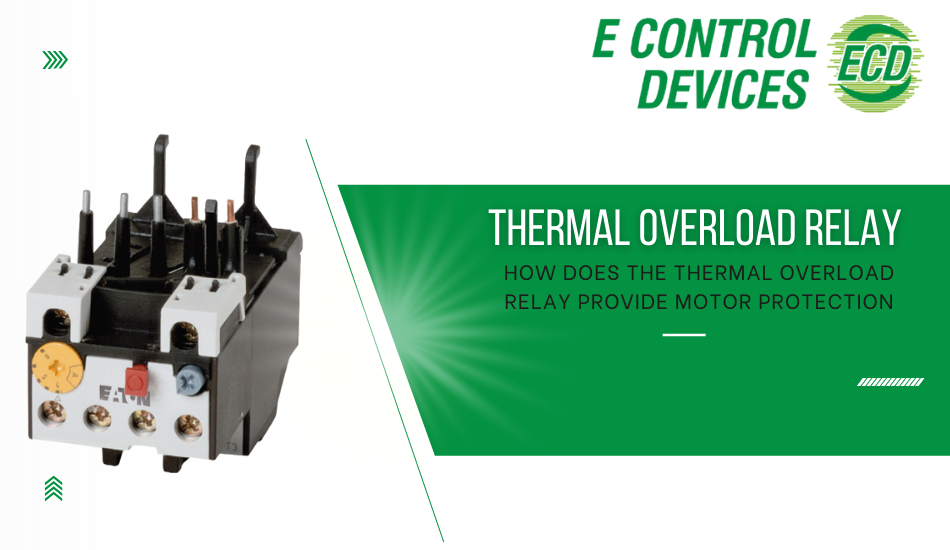The motor protection devices are the need of the hour as the high heat and extreme working conditions can fatally damage the motors and machines. The overheating is caused by the current flow in the circuits that create the overloading.
Here we use the thermal relay to prevent motor damage and keep the machinery working for a long time. There are 2 types of overload protection relays namely digital overload relay and thermal overload relay. Today we have an overload relay with its other elements to discuss!
Why Do We Need Overload Relay?
To activate any motor requires 6 times the total power it needs to run. Once the motor is started and running the power goes down. The motors can withstand the overload and high current surge only for a very short time i.e., a few minutes after which it will start getting overheated. The motor will take up more amperage when starting which is much higher than their entire current rating.
Now there are several devices that can be used for motor protection like fuses and circuit breakers, and motor protection relays. Any fuse or circuit breaker that is used in that motor will fail to hold such a high current. It needs a fuse or other motor protection device that is made to tolerate the current that goes beyond that high amperage.
The Eaton overload relay is very effective in certain situations. It can protect against short circuits due to overload and ground faults too. This relay is made to hold the overloads for a small fraction of time during its starting up period. If the higher current stays for a bit longer than anticipated then the overload relay will trip the circuit to break the current.
Classification of Thermal Overload Relays
Thermal overload is classified into 3 categories namely single-phase, two-phase, and three-phase. Now each of them has different current ratings, and different higher temperatures as per the rated current and heating element. One such example is the three-phased AC motors using three-phase thermal overload relays for phase protection.
Different Types of Thermal Overload Relays
There are a few types of overload relays and each of them is mentioned below:
The first is Bimetal Overload which uses a strip of bimetal. The strip serves as the lever for tripping the relay. When the overload is detected the bimetal strip gets heated and trips to close the circuit to prevent overloading and overheating.
Next is Ambient Compensated Overload Relay. It works similar to the bimetal overloads with the main difference that it maintains the ambient temperature as the name says.
The last one is Electronic Overload Relay which is different from the previous two types. It provides phase loss protection and disconnects the motor from the direct power source interrupting the power supply.
What Are The Benefits of Eaton Overload Relay?
Control Contact
It can work in with its NO and NC contacts on more than 1000 times of overload current than the current rating.
Current Time Characteristics
It is known as ampere-second characteristics and the operating time and current of the overload relay are inversed.
Current Adjustment
The current ratings and range of overload is up to 100%.
Reset Time
The Eaton overload relay has a reset time of fewer than 5 minutes and reset is done after the overload is corrected.
Thermal Stability
It refers to its capacity to withstand the overload current, if the motor protection device is not able to hold the current it does not have the required thermal stability.
What are the Possible Causes of Overload Relay Tripping?
There can be several reasons for a relay to trip and overloading is one of them. The overload relay also acts as a motor protection device that protects the devices from sudden electrical surges and overloading issues.
Another reason for tripping can be the size of the relay, if it is too small for the device or if the device has resistance, the relay will trip very often, and with relay tripping the contactor also lose power. There are some other reasons as well for the tripping of overload relay like:
- If the value for overload is small.
- The load current is too much for the relay.
- If there is any short circuit fault in the motor and relay.
- The contact materials are poor and do not have thermal stability.
What Are Some of the Applications of Overload Relay?
Almost all electronic devices have motors and run based on the overloading factor. Some of these applications are:
- Fans
- Pumps
- Compressors
- Mixers
- Conveyors
- Elevators
- Small machines with motor
- Industrial UPSs
Advantages of Using Eaton Overload Relay:
- Different mounting styles are compatible with overload relays such as panel mount and DIN rail mount.
- It can self-diagnose for troubleshooting.
- The adjustment range for the current is quite wide.
- It comes with dual resetting modes manual and automatic.
Conclusions
The overload relay has different ratings for different applications and installing the motor protection devices like the overload relay will prevent the motors from getting damaged due to excessive heating and high voltage of current ratings.
There is a broad category or range of thermal overload relay and the relay should be as per the requirement of the application and its current ratings.

